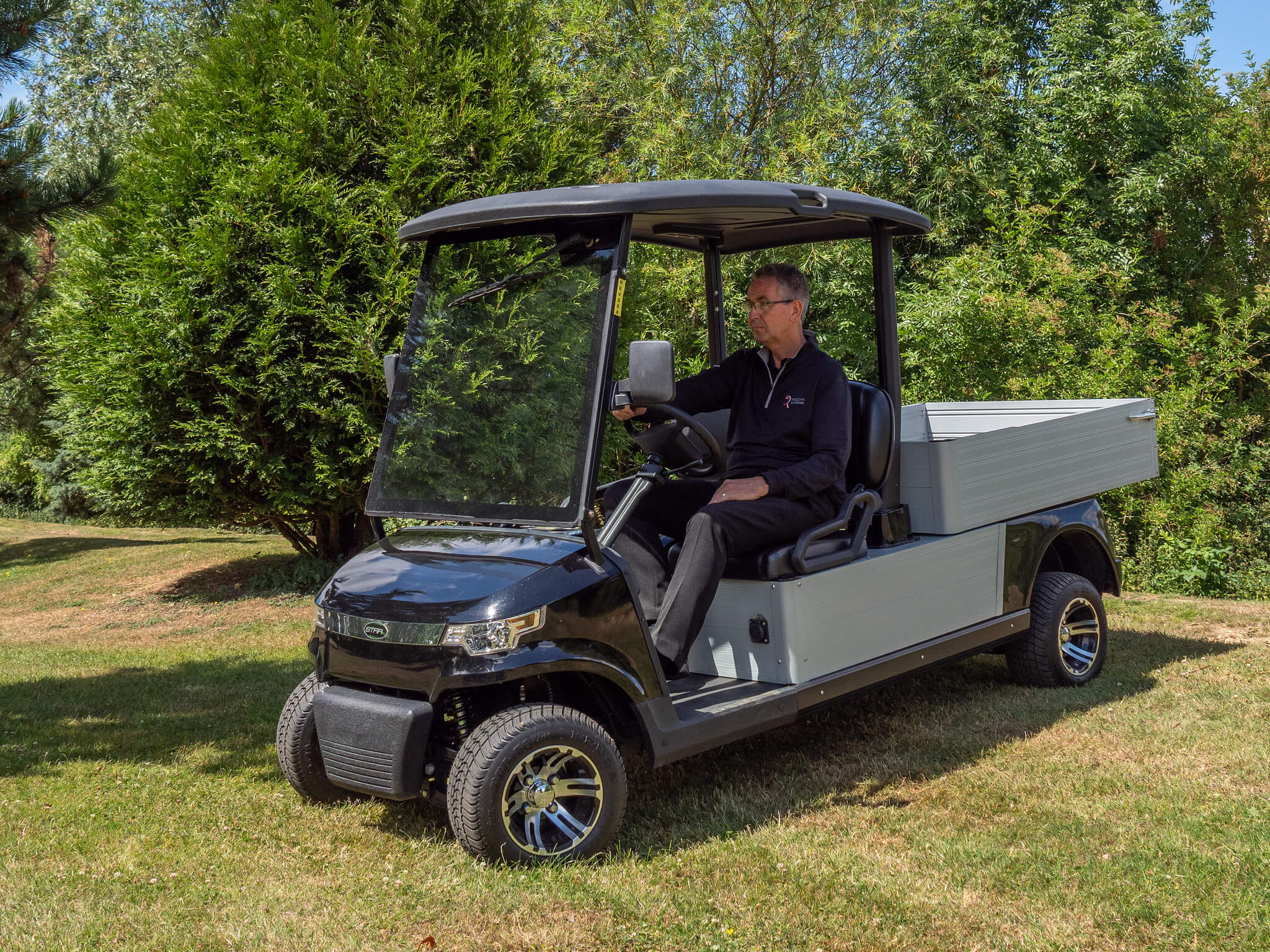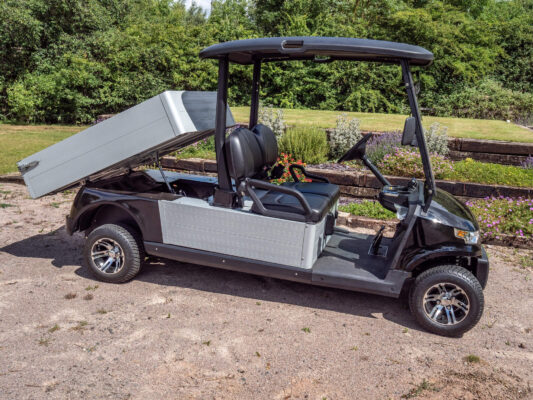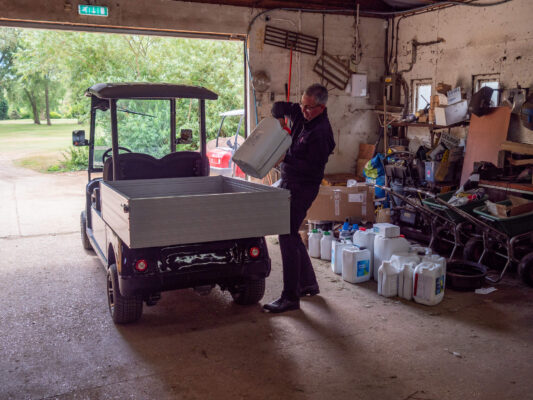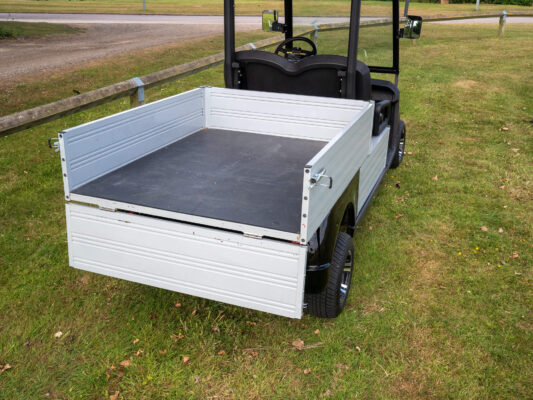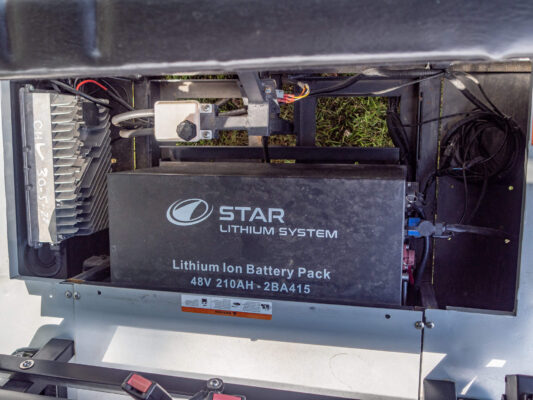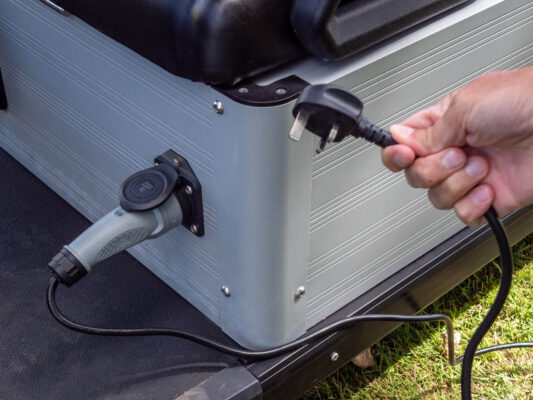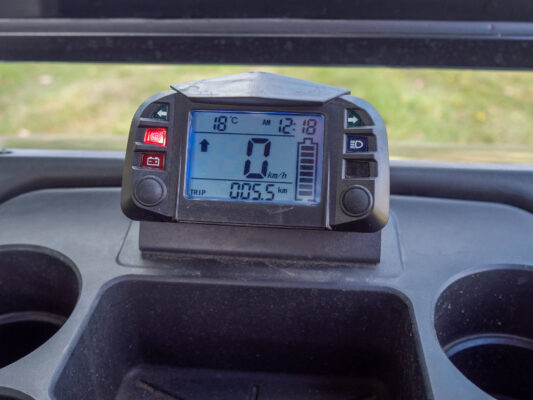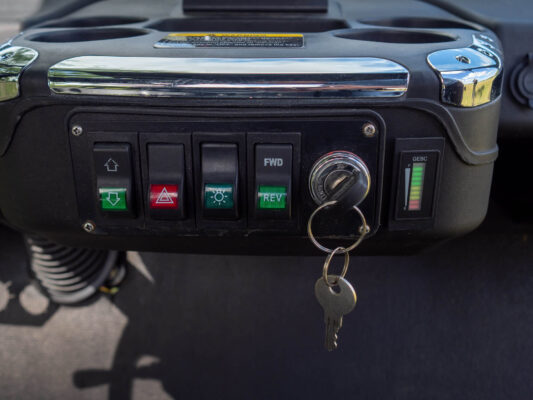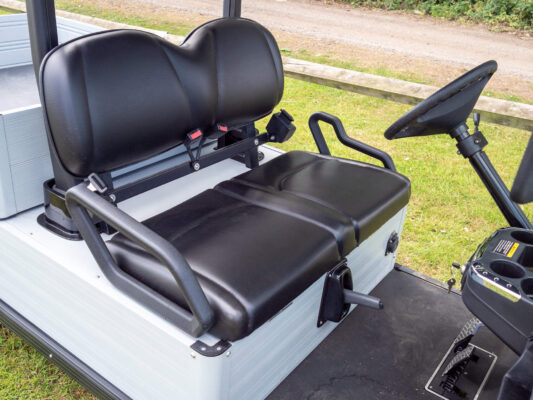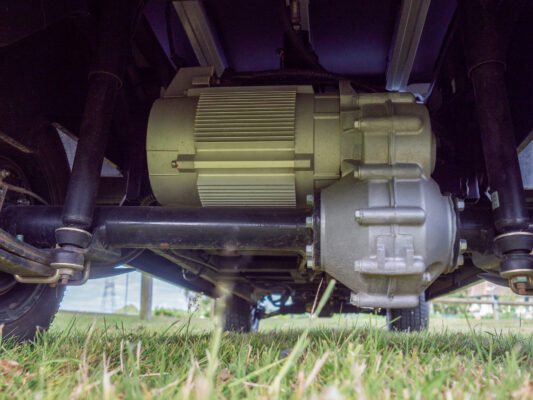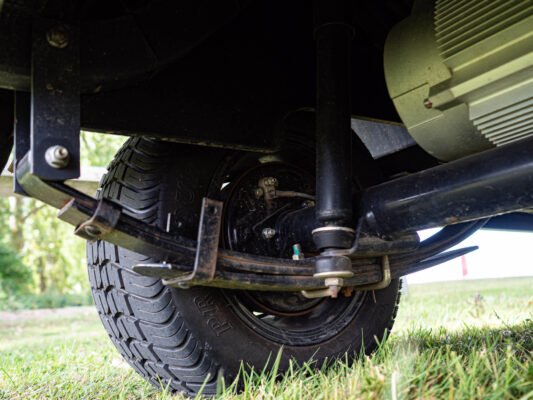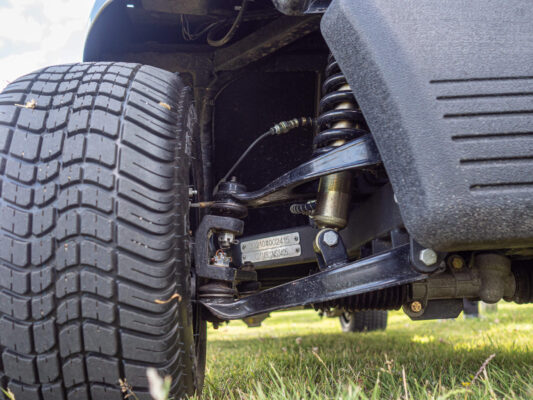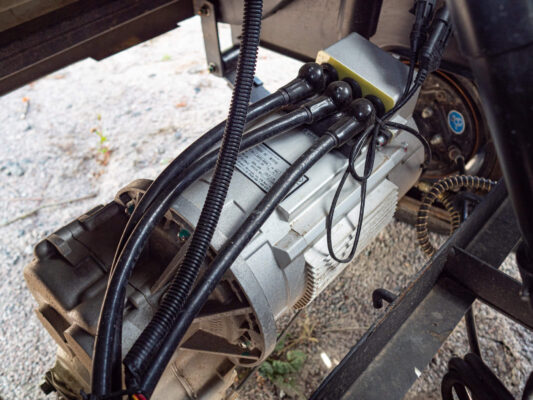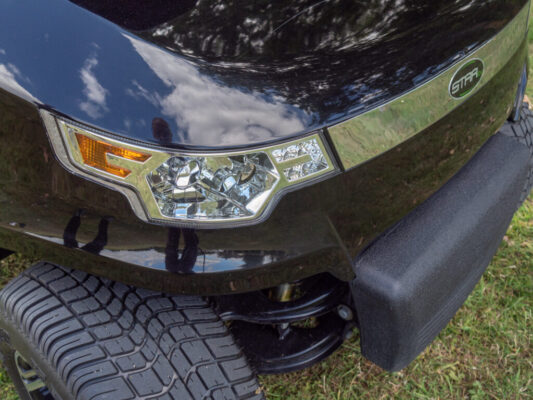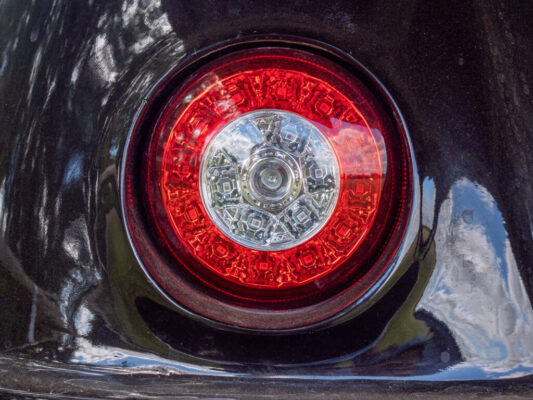STAR Capella Work Machine
James de Havilland is a technical freelance writer hailing from Banbury in Oxfordshire. A well-respected journalist, he has accrued over 30 years’ experience operating, testing and writing about turfcare machinery.
First impressions
Looking like a golf buggy with a load platform on the back, the Capella Work Machine is perhaps all too easy to overlook. Take a closer look at what it has to offer, however, and it is clear this not-so-little vehicle truly packs a punch. The load bed is well-sized and, with a 670kg capacity and a 520Kg tow capacity, well suited to tasks as varied as moving bulk materials through to ferrying people and goods across noise sensitive sites.
Noise sensitive? Ah yes, this is an electric vehicle but not one burdened with lead acid batteries. Instead, it has lithium-ion power for its electric motor, and this will deliver up to 60 miles per charge. That will be plenty for most. And an overnight charge from a three-pin plug will restore the battery to full with no need to hook into a dedicated charger.
The good news continues with the vehicle delivering sprightly performance and decent agility, its simple build being likely to endear it to maintenance staff too. Add low running costs into the equation and the Capella Work Machine will soon earn its keep.
Affordable to buy, even cheaper to run
The STAR Capella Work Machine has one significant advantage over traditionally powered light utilities: lithium-ion battery power as standard.
There’s nothing new in employing electric propulsion for basic utility vehicles, but many systems still rely upon ‘traditional’ lead acid battery packs that are both heavy and need maintenance attention to ensure decent power pack longevity.
The STAR Capella Work Machine looks like a golf buggy, but with a big boot, it’s a load lugger. Drawing power from a 210Ah lithium-ion battery, it claims a range of up to 60 miles, a 13amp plug connecting to the integral charger for ease of keeping the battery full. The load bed has electric tipping and a useful 670kg capacity, making this two-seater a useful addition to any utility vehicle fleet.
With a 210AH lithium-ion battery powering its 48V 5kW motor, the Capella Work Machine is immediately at an advantage. All in, the vehicle weighs just 770kg. This is a significant difference from lead acid battery powered ‘light’ utilities with that capacity – they’re more likely to tip the scales at well over 1,000kg.
But as a light utility vehicle, it’s clear the Work Machine is more golf cart than other small utility vehicles, but with one that has a healthy 670kg payload and a handy 1.40m by 1.17m rear platform with electric tipping as standard. It may not have the best ground clearance in its range at 120mm, but it’s more than capable on turf, tracks, gravel and hard surfaces, further enhanced by what could be a trump card or rather make that several cards.
First, it costs very little to run this handy carrier, an overnight charge restores a flat battery to full. Even at the current high prices, a full charge will cost a fraction of what it will to fill up with fuel. Second, the Work Machine runs near silently and has no ‘tailpipe’ or charging emissions. It’s ideal for moving people and goods around places such as a busy campus, training camp, hospital or even to ferry luggage and goods around holiday parks.
There is a third point. Affordability. Although a petrol-powered light utility offering similar capacity will cost less, few electric vehicles are as well-priced, more so when powered by a lithium as opposed to a lead acid battery. Then factor in the extremely low maintenance and service costs compare to combustion engines, and it becomes a clear winner.
The drive
Unladen, the machine is firmly sprung, and, over ruts and bumps, its ride can be politely described as unyielding. Those used to small utility vehicles will notice this off the bat. But comfort is easily enhanced by doing something simple: ease off the throttle pedal.
The Work Machine takes off briskly. The firm ride acting as a key to pegging the exuberance of the operator over lumpy ground. On a paved roadway or good track, the vehicle feels exactly like a golf cart, albeit one with a bit more pep if you decide to step on the ‘gas’.
Steering is extremely light, despite there being no power assistance, while the long wheelbase makes the claimed 5.5m turn radius seem more of a ‘best achieved’ thanks to needing nearly four and half turns of the steering wheel to achieve a lock-to-lock turn.
The bench seats, fitted with inertia lap belts, offer little support or grip, passengers tending to need to use the grab rails if they want to stay in place across sidling ground. Harsh criticism? Hardly. This little vehicle is all about easily accessible utility and it does exactly what it is intended to do, quietly and with a bit of pep in the way it goes. Simple in its build, it looks as if it can be easily fixed if something does go wrong and with its ability to just move ‘stuff’ without fuss will win it many friends.
